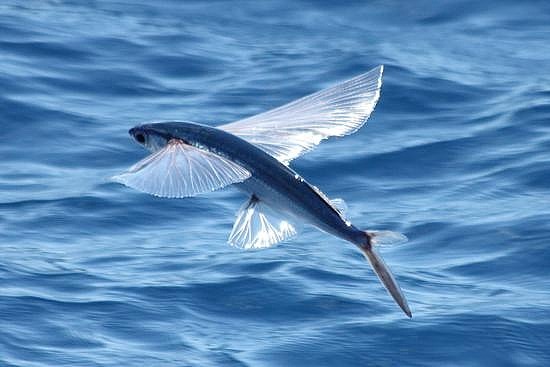 |
| A modern species of flying fish |
In so doing, they place themselves out of reach of predators save for when they briefly re-enter the water. The oldest known examples of this survival strategy come from a 235 million year old fish fossil called Potanichthys xingyiensis.
Part of a family of now extinct fish known as the thoracopterids, this creature is unrelated to modern flying fish, but new specimens belonging to the group, have elucidated how this flying mechanism first evolved. They were recovered from the Middle Triassic Zhuganpo Member of Falang Formation near the town of Wusha, Xingyi County, Guizhou Province and analysed by researchers from the Institute of Vertebrate Palaeontology and Palaeoanthropology. They constitute a new species, Wushaichthys exquisitus, which appears to be a primitive member of the thoracopterid family.
 |
| A female Wushaichthys exquisitus |
 |
| This later species of thoracopterid possessed a bottom heavy tail, indicating that it was capable of propelling itself out of the water. |
The shared skull morphology between Wushaichthys and later thoracopterids, however, shows the former was already adapting to life at the surface of the oceans - the habitat of flying fish when not gliding through the air. This suggests that the evolution of flight was a gradual process starting with skulls to enable the group to live in surface waters. This was followed by the evolution of a bottom heavy tail designed to launch out of water, then the wing-like pectoral fins enabling them to glide and finally, the eradication of scales to optimize flight mechanics.
At two inches long Wushaichthys was diminutive and so would have been easy prey for larger predators. Gliding adaptations seen in later thoracopterids were most likely a response to this selection pressure. Hooklets on the anal fins of the males resemble those found in a group of live-bearing teleost fish. This suggests that the early thoracopterids may also have birthed live young which would have also reduced the risk of population damage through predation.